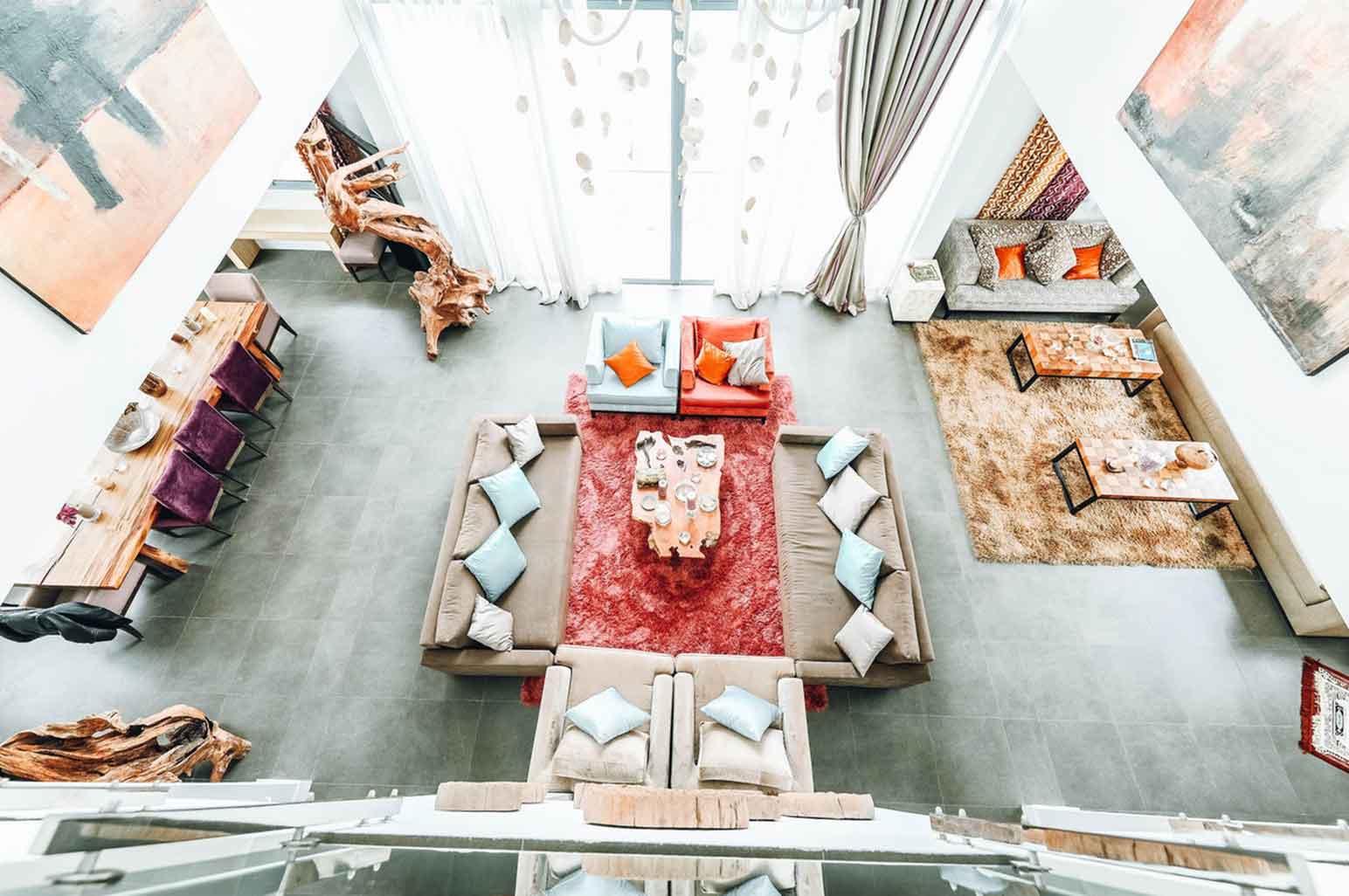
Our homes are wonderful things—they’re where we feel safe, calm, and like we can be ourselves—or at least, they should be. No matter what state your home is in at the moment, there are things that you can do to help cultivate more beauty and relaxation in your daily moments. The following will explore some interior design tips that can help enhance the beauty of your home. The goal is to create an environment where you can feel instantly cozy and rejuvenated when you walk through the door.
1. HOUSE PLANTS ARE WHERE IT’S AT
Yes, house plants require a teeny bit of care. Don’t stress; there are plants that everyone can keep living no matter what the other demands of their daily lives are. The reason we’re suggesting house plants isn’t only because they’re beautiful (which they are), but these little green helpers do a lot more than freshen up the look of your home. House plants help clean the air inside your house, resulting in greater levels of oxygen, which can help boost your mood, increase concentration, encourage focus, and facilitate relaxation. Once you start incorporating plants, you’ll be shocked by how much better space feels.
2. CONSIDER YOUR FLOORING OPTIONS
Nothing can change the vibe of a room faster than nice new flooring (especially if you’ve got shag carpet leftover from the 60s when the previous owner chain-smoked inside the house and the smoke-tinged the carpet a gross yellow-hue). When looking into new flooring, open yourself up to some of the more recent developments in the flooring world. No longer are there just carpet and wood to choose from. Hybrid flooring is available that is waterproof and durable beyond belief; visit this page to learn more. When choosing the floor, also keep in mind the maintenance required to keep it shiny and fresh. Ideally, you want fewer things on your to-do list instead of more. And if you have toddlers, please don’t get white carpet—you will regret it.
3. A FRESH COAT OF PAINT
When choosing paint, there are two factors that you want to keep in mind. The first is the toxin level of the paint brand you choose. This is especially important if someone in the home is pregnant or breastfeeding and if there are very young children inside. The VOCs emitted by paints are floating around in your air for up to a year after painting occurs. You can reduce the amount of these chemicals by properly ventilating the house when you paint, but the best option is to find a low-VOC paint or a no VOC paint.
You also want to consider more than personal preference when it comes to the color that you choose. Take a moment to research color psychology and think about how the larger swatches of colors in your home are affecting the vibe of the space by altering your mental state. It turns out that the hyper-trendy gray walls aren’t so good for depression or anxiety. Remember, part of excellent interior design is thinking about how people feel within the space.
4. FURNISHING TEXTURE
When looking at furniture to include in your home, don’t forget to think about texture. The most beautiful sofa in the world that feels scratchy or static-y is going to drive you nuts and result in no one using the gorgeous new room. You want to touch the materials before purchasing—especially when it comes to bigger throws and pillows.
5. CHANGE THE LIGHTBULBS
No, seriously, change your light bulbs. This step is overlooked by so many people, but it’s crucial to good design—some even say that lighting is everything. Watch a video tutorial of different colored bulbs in action (soft white, daylight, bright white, etc.), and make your choice. This is the least expensive way to give your entire home a facelift. As a bonus, you can get energy-efficient bulbs that save you a bit of money on utilities.
6. DON’T FORGET THE NATURAL LIGHTING
In addition to sorting out your bulb situation, you’re going to want to pay attention to how natural lighting works in your space. Studies have shown that natural lighting has many positive effects on the human psyche (again, pretty rooms are rooms that people like being in). To maximize natural light, try placing mirrors opposite your windows.
The above tips should help you take whatever room is frustrating you to the next level. Whenever you’re making interior design choices, you need to keep in mind how you and those you live with will feel with the new features. A welcoming home is what we all need at the end of the day.
